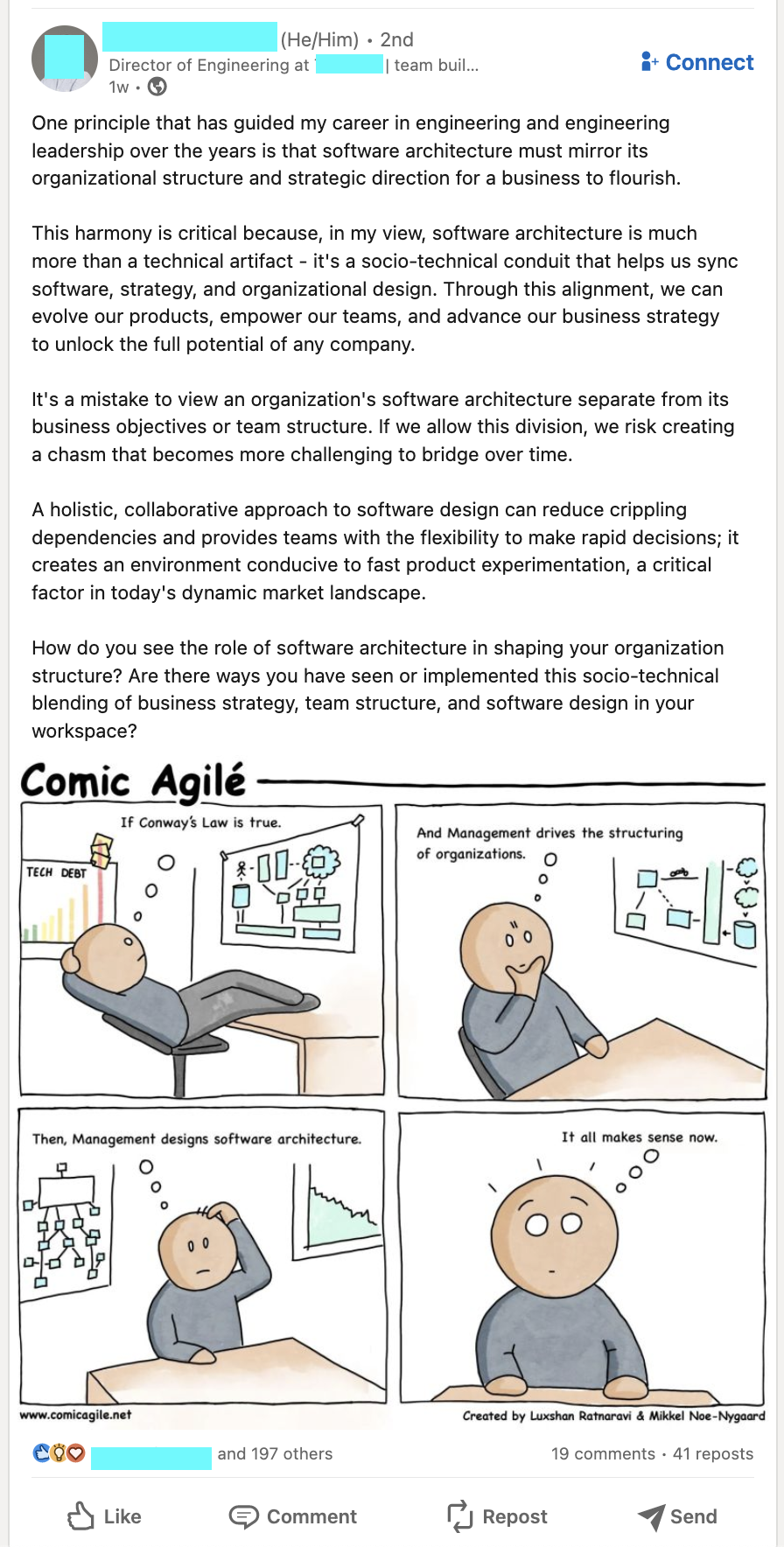287
you are viewing a single comment's thread
view the rest of the comments
view the rest of the comments
this post was submitted on 19 Aug 2023
287 points (95.0% liked)
Programmer Humor
32706 readers
810 users here now
Post funny things about programming here! (Or just rant about your favourite programming language.)
Rules:
- Posts must be relevant to programming, programmers, or computer science.
- No NSFW content.
- Jokes must be in good taste. No hate speech, bigotry, etc.
founded 5 years ago
MODERATORS

Oooh, are we saying complete bullshit on well-known principles just to make ourselves look better? Here, lemme try
Full disclosure, I didn't write this, this is GPT-4 on Conway's law. Here's the prompt, if anyone's curious:
10/10, absolute drivel, no notes 👌 Extra credit for "organogram of success."
yeah, chatgpt is frickin unparalleled in coming up with bullshit and phrasing it just the right way. my favorite thing is asking it to be sarcastic and passive-aggressive:
i literally just added "do the above assignment in a sarcastic and passive-aggressive tone" to the prompt, lol
That version is so much more readable for some reason. Like this is actually a wonderful sentence:
That doesn't sound (to me) like an LLM, and yet the stuff it produces by default reads in a tone that we would have described as "robotic" long before GPT.
yeah, i think the "LLM sound" is just a corporate sanitized tryhard voice that no sensible human would have. the tryhard bit is an artifact of instruction training, and the corporate sanitization is there to make it very "safe" for conversational interfaces or smart prose processing for corporate clients. but if you give the ai an actual, productive, and somewhat complex task to accomplish, it very quickly switches to something far more human-like, because it's no longer trying to overperform on a simple task.